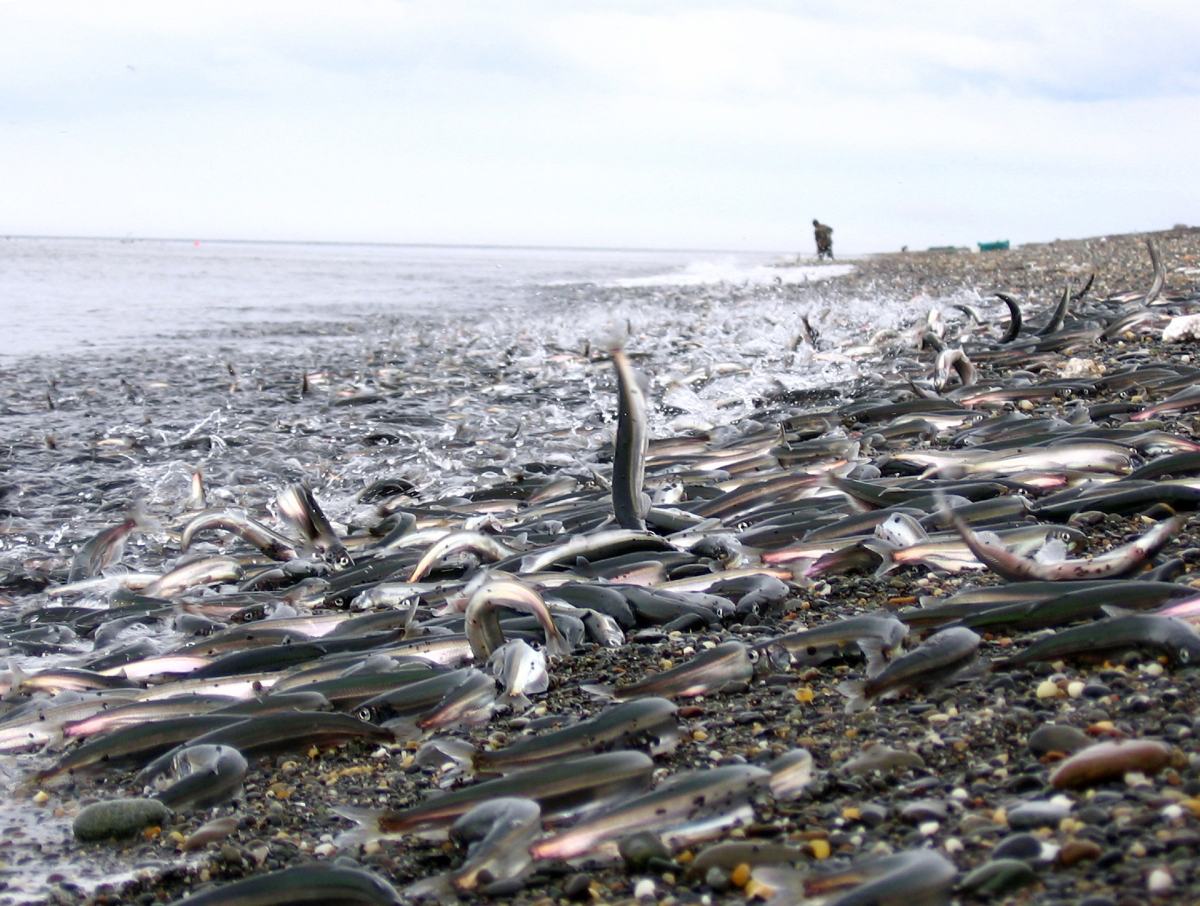Support strong Canadian climate journalism for 2025
Looking at travel ads for Newfoundland and Labrador, you may come across a photo or two of a puffin or a whale with small silver fish hanging out of their mouths. Those are capelin — an oily and quick-growing species that are a fundamental part of the North Atlantic Ocean food chain and ecosystem. They’re also overfished, and without proper action, scientists worry the stock could face extinction.
Fisheries and Oceans Canada (DFO) estimates capelin numbers today are about six per cent of what the population was before the stock began to collapse in the 1990s. That number isn’t sustainable, and an immediate shutdown of the fisheries is the only option that could allow the fish to recover, said Robert Rangeley, a marine biologist and Oceana Canada’s science director.
“It's unfortunate. It's the outcome of fisheries management decisions in the past. Nobody, including Oceana, wants to see fisheries being closed,” he said. “But it is a solution that works.”
The Canadian-based NGO released a report Thursday outlining why a closure is the only way to go. Rangeley acknowledged it’s a difficult decision, but one DFO made recently with herring and mackerel fisheries on the East Coast. The department is set to announce a quota for capelin in the upcoming months.

Claire Teichman, press secretary for DFO, said in an emailed statement that capelin are important to fisheries, as well as ocean ecosystems and that the minister uses the “best available science” when making decisions around fisheries. DFO reduced the quota for capelin in 2021 by 25 per cent.
“The department consults and collaborates with Indigenous communities, industry and harvesters, scientists and other stakeholders when making decisions on fish management,” said Teichman. “No decision has been made on this stock.”
The capelin fishing industry currently harvests the females’ roe, which means those adult fish don’t get a chance to spawn, and DFO research shows larval production has been below average. But there’s not nearly enough data to give a full picture of the population, and DFO needs to put resources behind more research, said Rangeley.
To make decisions around fisheries, DFO uses its Precautionary Approach Framework, which includes “being cautious when scientific knowledge is uncertain, and not using the absence of adequate scientific information as a reason to postpone action…” Rangeley said DFO is going against that framework by not closing down capelin fisheries. Under those guidelines, a healthy stock should be at 900,000 tonnes, compared to last year’s capelin quota of 13,000 tonnes, said Rangeley.
It’s not the first time there’s been a call for the shutdown of capelin fisheries. Past appeals by Oceana Canada were met with huge resistance from the province’s fishery union, which said doing so would be a hasty move that would hurt their livelihoods.
The NunatuKavut Community Council, which represents NunatuKavut Inuit residing primarily in southern and central Labrador, supports a full closure. President Todd Russell said the council has been calling for more protection for capelin since stocks started to go down in the 1990s.
He says Inuit in the area have long noticed fewer and fewer capelin spawning on Labrador’s shores — the fish lay their eggs on beaches and the hatchlings stick around on land for about a week before returning to sea.
“From our traditional knowledge from many generations and participation in the fishery from a food perspective primarily, but also in the commercial context, we know how vital the capelin is,” he said.
“People say time and time again that the capelin is one of the best indicators of a healthy ecosystem and healthy fish resources. So, so much depends on the capelin.”






Comments